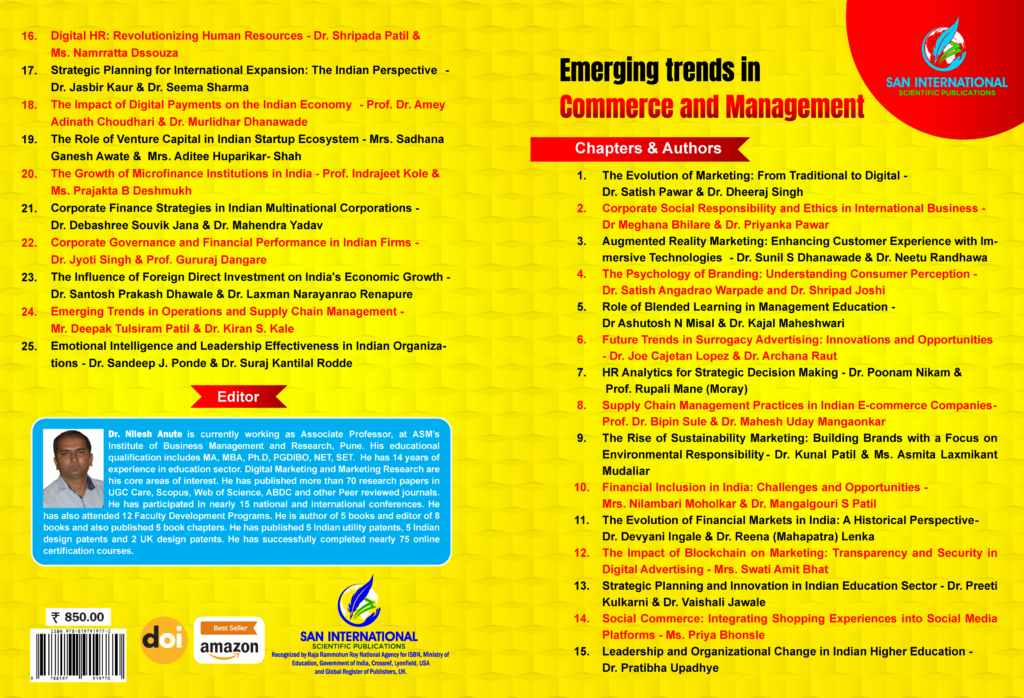Book Title: Emerging Trends in Commerce and Management
Editor: Dr. Nilesh Anute
ISBN: 978-81-979197-7-0
Chapter: 7
DOI: https://doi.org/10.59646/emc7/255
Authors:
Dr. Poonam Nikam, Dean – IIEBM, Indus Business School, Pune, Maharashtra, India.
Prof. Rupali Mane (Moray), Assistant Professor, Modern Institute of Business Management, Pune, Maharashtra, India.
Learning Objectives
The aim of this chapter is to provide readers with a thorough comprehension of HR analytics and its strategic importance in contemporary organisational management. Upon completion of this chapter, readers will have acquired the expertise to proficiently gather, oversee, and evaluate HR data in order to facilitate well-informed decision-making. This encompasses a comprehensive comprehension of fundamental HR measurements and KPIs, the diverse categories of HR data, and the techniques and instruments employed in HR analytics, such as descriptive, predictive, and prescriptive analytics. The readers will get knowledge about the pragmatic uses of HR analytics in several domains such as recruiting, performance management, employee engagement, learning and development, and workforce planning. Furthermore, the chapter seeks to offer understanding regarding the difficulties and constraints of HR analytics. The event will focus on showcasing emerging trends and the future trajectory of HR analytics, with a specific emphasis on the integration of artificial intelligence (AI) and machine learning, the significance of big data, and the transition towards real-time analytics. The main objective of this chapter is to equip readers with the skills to effectively utilise HR analytics in order to make strategic decisions, promote a culture that relies on data, and ultimately contribute to the overall success of their organisations. By acquiring a deep understanding of the principles and methodologies covered, readers will possess the necessary skills to effectively utilise HR analytics in order to improve operational efficiency, boost employee happiness, and align organisational strategies.
References
- Ghewari A, Anute N (2021) Social Media Marketing Strategies Of E Learning Organizations With Special Reference To Elementary Education, Ilkogretim Online – Elementary Education Online, 2021; Vol 20, Issue 6, Page no. 3593-3600.
- Njoku, E., Ebie, S., 2015. Shaping innovativeness and creativity with Electronic Human Resource Management (e-HRM): exploring a conceptual framework. Knowl. Manag. 15, 1–14. https://doi.org/10.18848/2327-7998/CGP/v15i03/50834.
- Ogbeibu, S., Emelifeonwu, J., Senadjki, A., Gaskin, J., Kaivo-oja, J., 2020. Technological turbulence and greening of team creativity, product innovation, and human resource management: Implications for sustainability. Journal of Cleaner Production 244, 118703. https://doi.org/10.1016/j.jclepro.2019.118703.

